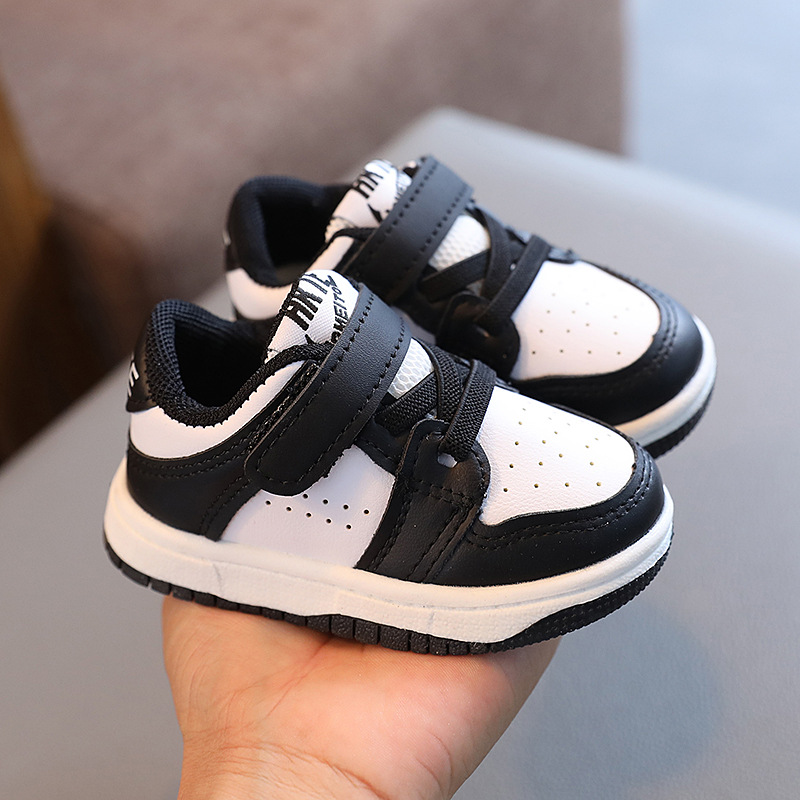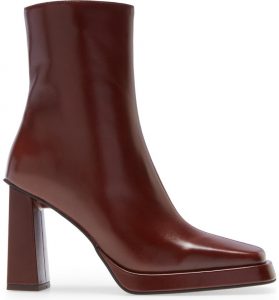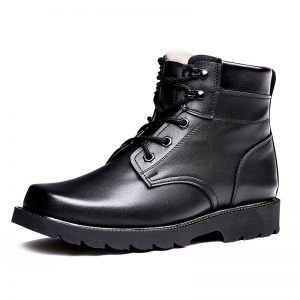As a professional shoe factory, we have been solving many problems for shoe companies. With so many options to choose from, you might not know where to start. That’s why I’ve put together this guide to help you sort the different types of sneakers by brand and attribute.
First, let’s start with the brand categories. The market is flooded with sneaker brands ranging from Nike and Adidas to Puma and Reebok. Each brand has its own unique style and reputation, so it’s important to do your research and find one that suits your needs and preferences.
Second, let’s explore classification by attribute. Here you can really narrow your search and find the perfect sneaker for your specific needs. There are two main categories of attribute classification: functional sports shoes and training shoes.

Functional athletic shoes are designed for specific sports such as basketball, jogging, soccer, tennis, extreme sports, etc. These shoes are designed to provide support, protection and cushioning for the movements and impacts associated with each sport. For example, basketball shoes come in power and speed styles and have specific designs for indoor or outdoor play. Tennis shoes are available in clay and rubber courts with an emphasis on grip and support.
Training shoes, on the other hand, are designed for general workouts and training sessions. These shoes are versatile and can be used for everything from weightlifting and cardio to cross training and dancing. Comfortable and durable training shoes come in a variety of styles and designs to suit your needs.
But what about the different types of sneakers in each category? Let’s take functional sports shoes as an example to understand in detail. Basketball shoes are designed with priority given to ankle protection, launch assist and shock absorption. Football boots are designed for grip and shooting. Running shoes focus on light weight, breathability and support. The type of shoe you need depends on your specific needs as an athlete.
It is worth noting that children’s shoes do not fall into this system, as children’s needs and sizes are very different compared to adult athletes. When shopping for children’s shoes, it is important to prioritize comfort and support for developing feet.
Moving on to another important shoe category, let’s explore the different types of girls shoes. Choose from a variety of styles, from flip flops and sandals to wraps and heels. Each style of shoe has a different toe shape, sole thickness and material to suit your personal style and preferences.
When choosing the right ski boots, there are several key factors to consider. Alpine shoes consist of inner and outer sections that provide support and insulation. Trail shoes are usually made of nylon or leather for flexibility. Platform shoes feature a high waist and forward lean for easy jumping and maneuvering. It is important to choose ski boots that fit well, are comfortable and flexible. Beginners should prioritize lighter, more flexible ski boots, while advanced skiers can opt for tighter boots for improved maneuverability and control.
Types of high heels
Generally, it can be divided into three categories: flat heels, medium heels, and high heels, with different shapes, such as rolled heels, pressed palm heels, wedge heels, etc. The size and thickness of heels include stiletto heels, thick heels, horseshoe heels, and semicircular heels. wait. The shape of the heel cannot be the same. It changes with the development of the market economy and changes in clothing trends. If it must be fixed, it is difficult to adapt to changing shoes. Therefore, we can only roughly distinguish the types of heels according to the height of heels in people’s concepts. For example, women’s shoes with heels below 30mm are flat heels, those between 30-45mm are medium heels, and those above 45mm are high heels.
Classification of skirts: long skirts, midi skirts, short skirts, miniskirts; . Core spun silk: It is a popular raw material for stockings on the market. It refers to spandex core-spun silk formed by wrapping or winding nylon silk on spandex silk. In addition to the softness of nylon silk, it also has the advantage of high spandex elasticity.
Velvet stockings: The raw materials are all made of one-way core-spun yarn or two-way core-spun yarn. Knitted socks have high elasticity, soft feel, finer transparency than nylon stockings, elegant vision, high durability and wear resistance, a little matte, and keep warm.
Ultra-thin velvet socks: woven with high-tech ultra-fine elastic fiber silk that is softer than hair, with a dense and delicate texture, smooth and silky to the touch, crystal clear and transparent, with good air permeability.
Tactel: It is a high-tech polyester amine fiber developed by DuPont. It is soft to touch, has good air permeability, and is comfortable to wear. Fabric made of Tactel is fine, breathable, soft, comfortable and wrinkle-resistant, and the fabric is shiny. People’s clothes look new every day.
Lycra (LYCRA): It is a new type of fiber launched by DuPont of the United States. This fiber can be stretched very easily, but it can be attached to the surface of the human body after recovery, and has little binding force on the human body. Fitting and comfortable, it stretches freely on the body and can move with you. The elasticity and toughness, color and breathability of socks containing Lycra will have better performance.
Combined cotton: During the processing of cotton fibers, a combing machine is used to card the fibers to almost completely remove various impurities in the fibers. Fabrics spun with this cotton will feel better.
Mercerized cotton: refers to the mercerized process of raw cotton fibers in a concentrated alkali solution under certain tension conditions. Mercerized cotton fibres are more glossy than raw cotton fibres on the premise that other physical indicators do not change. Good quality, a more comfortable hand feel, and relatively less wrinkle resistance.
Classification of leather shoes in my country
My country’s footwear is divided into leather shoes, cloth shoes, rubber shoes, plastic shoes (chemical shoes), called four shoes. With the progress of society and the development of science and technology, people have higher and higher requirements for wearing shoes, and the four kinds of shoes are infiltrating from raw materials, accessories, processing and assembly technology, styles, and functions. competition and impact. Therefore, impel aspects such as the molding style of footwear, structural materials, function all change with each passing day. Now we will introduce the types of leather shoes we sell as follows:
1. Divided by function:
a. Daily shoes: All kinds of leather shoes that people wear every day, including popular fashion shoes, and in some areas, daily shoes are collectively referred to as fashion shoes.
b. Military shoes: leather shoes issued by the state worn by officers, soldiers and policemen of various services and arms. Such as flight boots, submarine boots, tank boots, frontier ski boots, and work boots worn by firefighters and traffic police.
c. Work shoes: they are customarily called labor protection shoes, and abroad they are called labor shoes (work shoes for labor). Such as driver’s shoes, nurse’s shoes, textile women’s shoes, anti-smashing shoes, anti-oil shoes, anti-skid shoes, anti-corrosion shoes, anti-radiation shoes, as well as geological shoes, aerospace shoes, etc.
d. Stylistic shoes: shoes worn by professional or amateur workers in the arts and sports circles for performances, sports competitions and training. Such as: theater shoes, acrobatic shoes, dance shoes, football shoes, softball shoes, skate shoes, golf shoes, bicycle shoes, motorcycle shoes, weightlifting shoes, wrestling shoes, hiking shoes, parachuting shoes, running and jumping shoes, coach shoes, etc.
e. Tourist shoes: Shoes for excursions and travelers. It evolved from rubber shoes into leather shoes, but it still has dual characteristics. Its outstanding performance is lightweight, soft, flexible, breathable, sweat-absorbing, comfortable to wear, and helpful for movement.
f. Medical orthopedic shoes: For medical purposes, they are used to treat diseases or to support, protect, correct lower limbs and foot bones, or to repair physiological defects. Such as magnetic therapy shoes, stimulating point shoes, athlete’s foot shoes, polio shoes, leg boots, ankle boots, toe protection shoes, etc.
2. Distinguished by wearing:
Can be divided into men’s, women’s, children’s, baby shoes and elderly shoes:
a. Baby shoes: size 9~12.5; small children’s shoes: size 13~16; medium children’s shoes: size 16.5~19.5; big children’s shoes: size 20~23
b. Adult women’s shoes: size 21.5~25. Above 25.5 are extra large women’s shoes, and below 21 are extra small women’s shoes. c. Adult men’s shoes: size 23.5~27. Men’s shoes above 27.5 are extra large, and men’s shoes below 23 are extra small. In some areas, due to the influence of certain factors, the starting point of the extra large size is lowered by half a size, and the starting point of the extra small size is increased by one size.
d. Shoes for the elderly: shoes that are not determined by shoe size, but are characterized by shape structure and materials that meet the psychological and physical needs of the elderly.
3. Distinguished by leather shoe structure:
Can be divided into boots, high waist shoes, low waist shoes, air shoes, slippers.
a. Boots: Shoes whose waist height reaches and exceeds the calf are called boots. Such as Tibetan boots, Mongolian boots, soft-waisted riding boots, hard-waisted riding boots, felt boots, fur boots, special military boots, snake-shaped zipper boots, overboots, etc.
b. High-waisted shoes: Shoes whose upper exceeds the ankle bone. Such as hook-and-eye shoes (military hook shoes, police hook shoes), ingot shoes, tight cloth boots (elastic boots), doctor shoes, etc. In some areas, the high waist of the tube-loaded shoe is called the boot toe, which is not a tube boot but a high-waist shoe.
c. Low waist shoes: shoes with uppers lower than the ankle bone. It is divided into long face shoes, short face shoes and shallow shoes. Shoes with the front of the long-faced shoes reaching and exceeding the structure of the tarsus, such as five-eye shoes (three-section head type, inner ear type, outer ear type, etc.), youth style (squeezed ridges, inlaid covers, braided flowers), tight cloth shoes (elastic shoes) ), zipper shoes, etc. Shoes with a short front that do not reach the structure of the tarsus. Such as round mouth shoes, special-shaped mouth shoes, flower-shaped mouth shoes, etc. Shallow shoes generally refer to long-faced shoes or short-faced shoes that are easy to put on and take off and have no closed structure at the tarsus. Such as tongue shoes, siu mai shoes, boat shoes, loafers and other casual shoes.
d. Hollow shoes: shoes with hollow front, middle or back. That is, front empty shoes, hollow shoes (side empty shoes), and back empty shoes. These are mostly sandals and air-permeable shallow shoes in early summer and early autumn.
e. Slippers: backless shoes for indoor use or daily use in hot areas, such as heelless shoes and y-shaped shoes.
4. Distinguish by wearing season:
Can be divided into cotton, clip (single), sandals. Its characteristic is that the classification depends on the material, especially the shoe lining material.
a. Cotton shoes (thick-lined shoes): felt, blankets, fur and thermal materials are used as the lining of the shoe to prevent cold or protect the shoe (or the upper of the shoe is made of cold-proof material).
b. Clip-on shoes (single shoes): Single-layer shoes with or without linings made of thin fabrics such as lining leather, canvas, and chemical fiber. Most of them are worn in spring and autumn (in areas with suitable temperatures, they can be worn all year round).
c. Sandals: shoes worn in summer with straps, mesh, braided structures or perforated holes.
5. Distinguished by the heel structure:
Can be divided into flat heels, medium heels, high heels, extra high heels, wedge heels, heelless shoes and so on.
a. Flat-heeled shoes: Heel height less than 30mm.
b. Medium-heeled shoes: the heel height is 30 mm to 50 mm.
c. High heels: the heel height is 55 mm to 80 mm.
d. Extra highheels: with a heel height of 85 mm or more.
e. Wedge shoes: The heel body is wedge-shaped and connected to the forefoot.
f. Heelless shoes: Shoes without a heel structure on the sole.
g. Platform shoes: Shoes with foam materials with a front and back height of more than 50mm
6. Distinguished by manufacturing process:
Can be divided into: sewing shoes, adhesive shoes, injection shoes, molded shoes, injection shoes, vulcanized shoes.
a. Sewing shoes: also known as needle sewing shoes. All shoes made by sewing process are sewing shoes. Including seam welt shoes, through-seam shoes (blind seam shoes), layered shoes (big shoes), reverse shoes, bun shoes, etc.
b. Adhesive shoes: all kinds of shoes manufactured by using adhesives for upper and sole assembly.
c. Molded shoes: shoes made by molding process. The mixed rubber is pressurized through the mold, heated, moulded and vulcanized, and combined with the upper leather to form a shoe.
d. Injection shoes: Shoes made by injection molding process. Use an injection molding machine to inject plastic (plastic-plastic mixture) into the mold to cool and shape it, so that the top and bottom are combined into a shoe.
e. Injection rubber shoes: Use the injection machine to inject rubber material into the mold, vulcanize the shape, and combine it with the upper to form a shoe.
f. Vulcanized shoes: use the sticky paste method to form the mixed and formed film and the upper paste, pressurize the vulcanization tank, heat and vulcanize to make shoes





